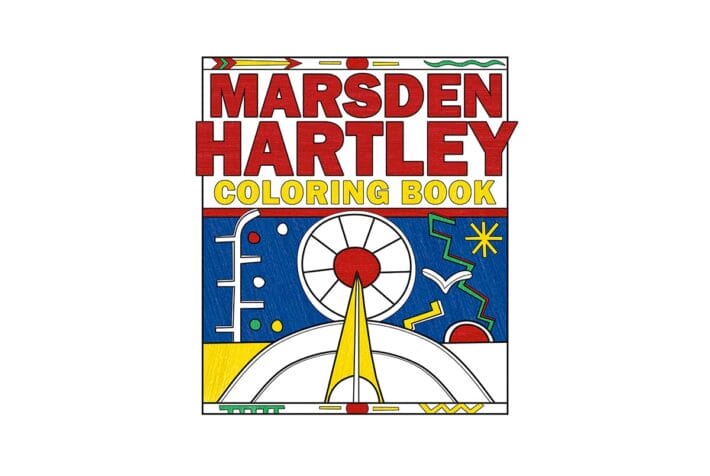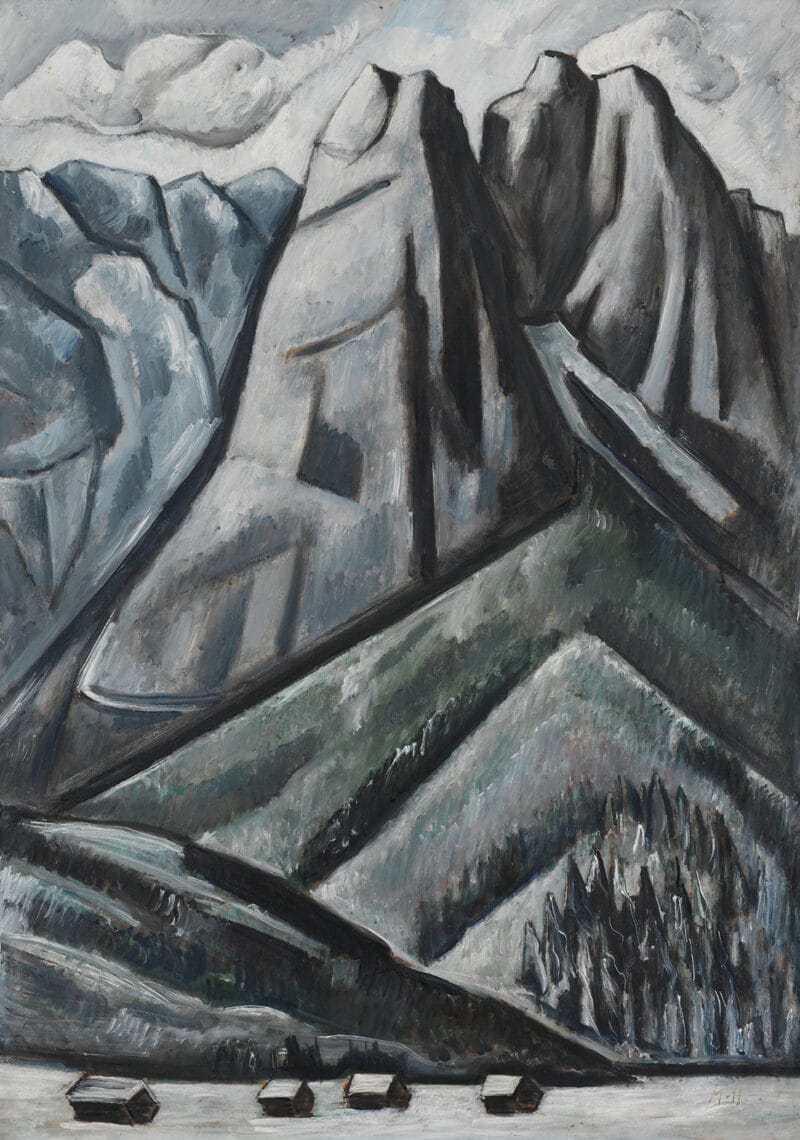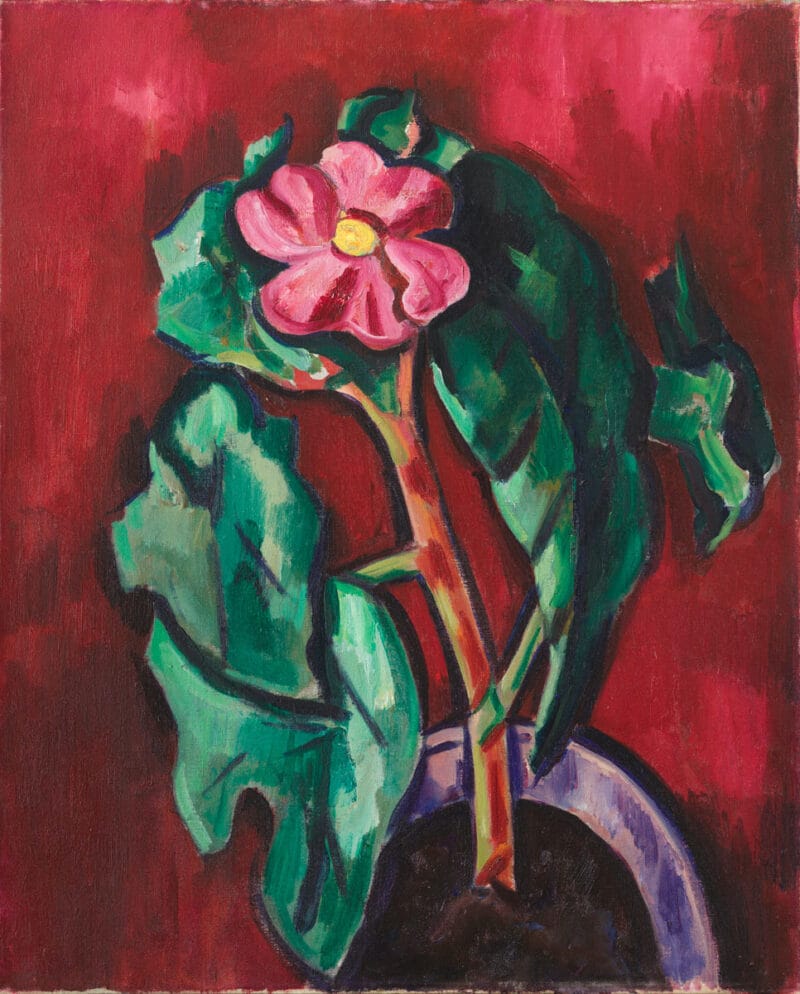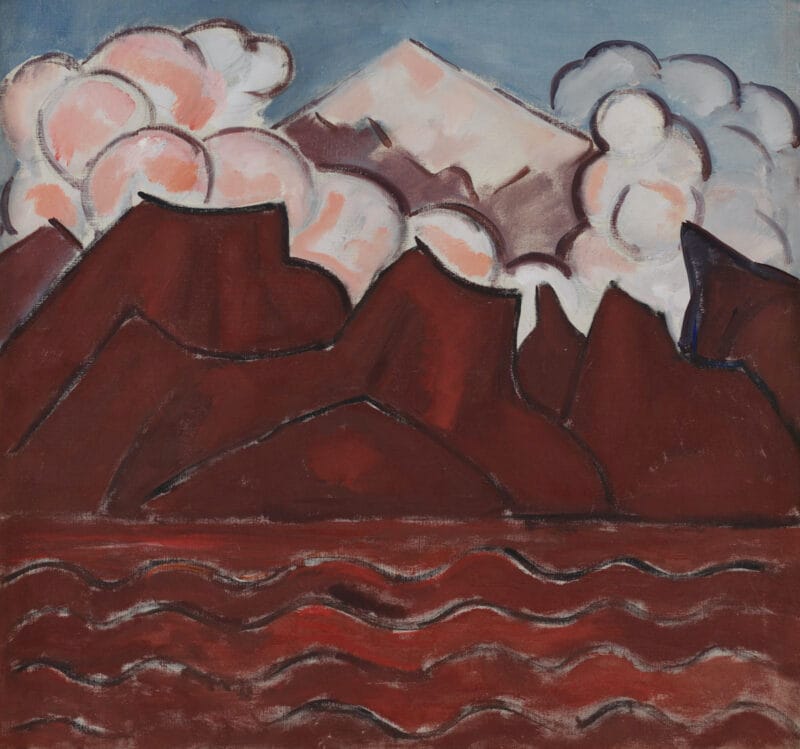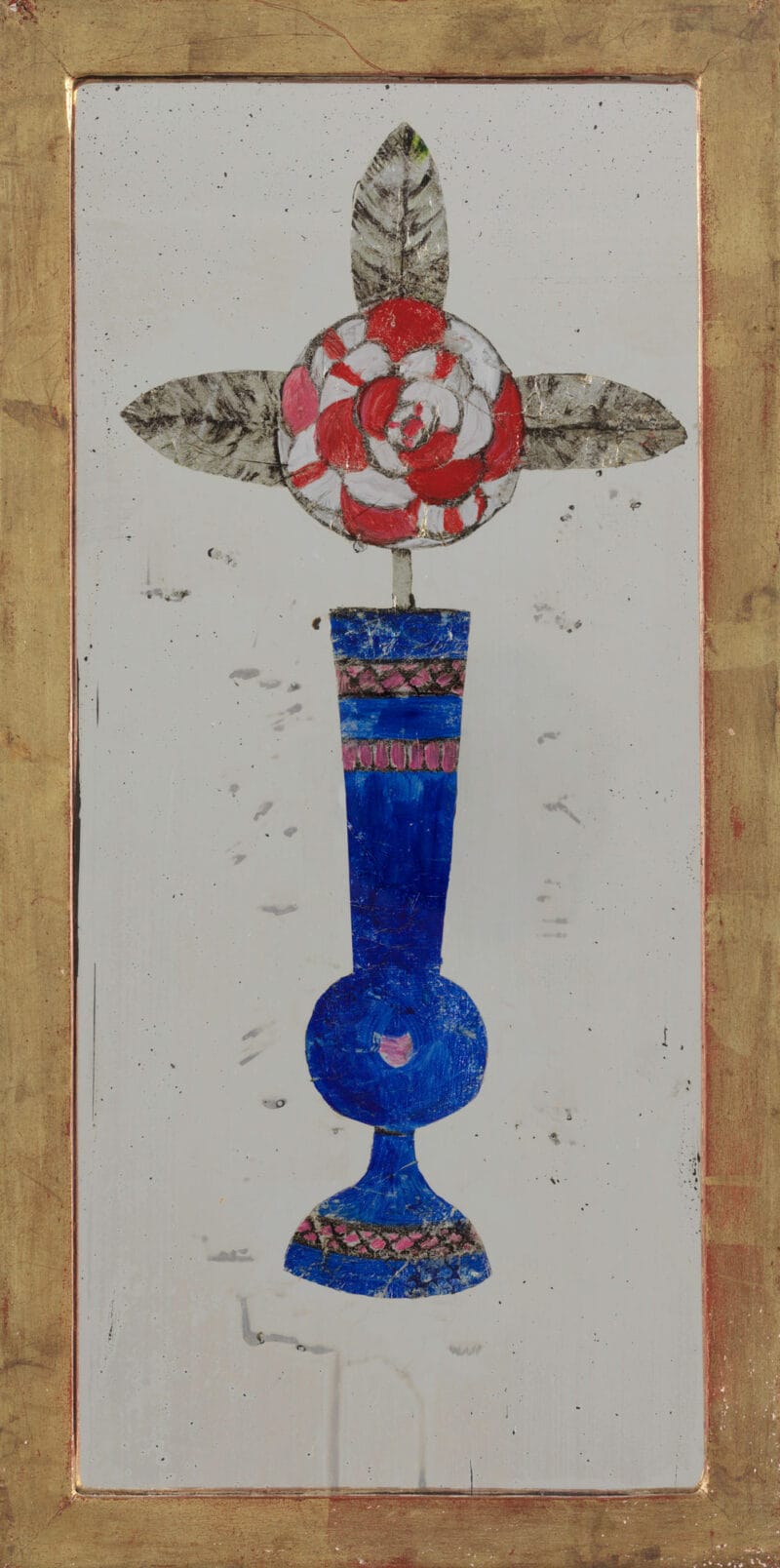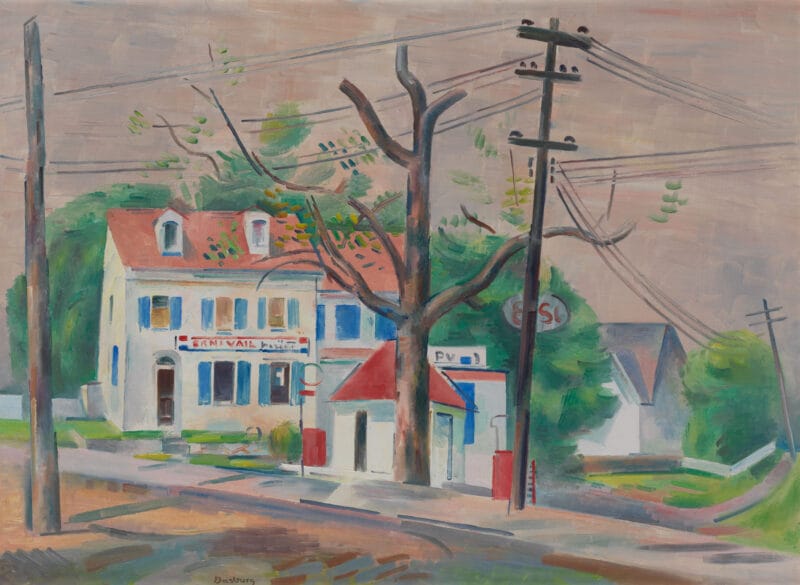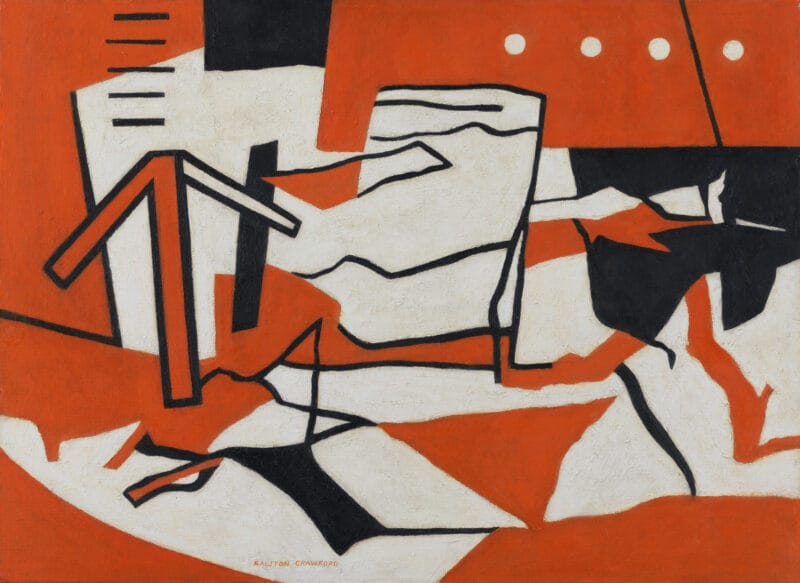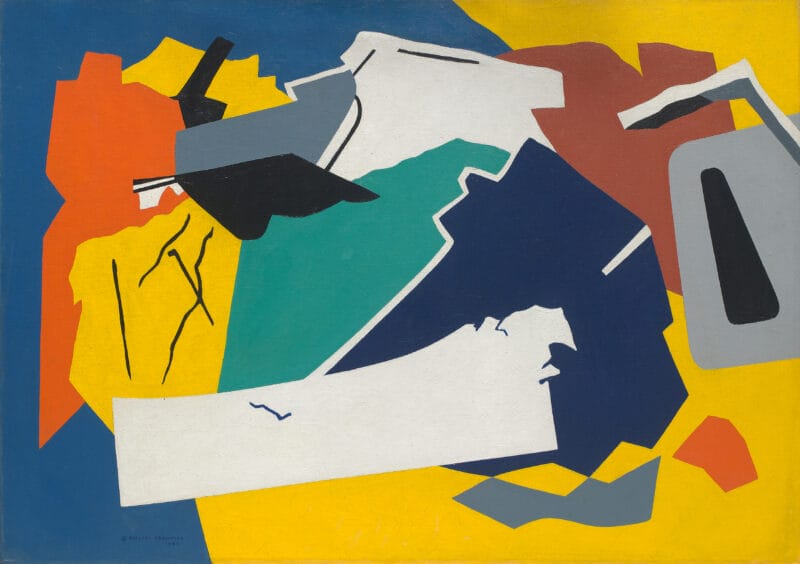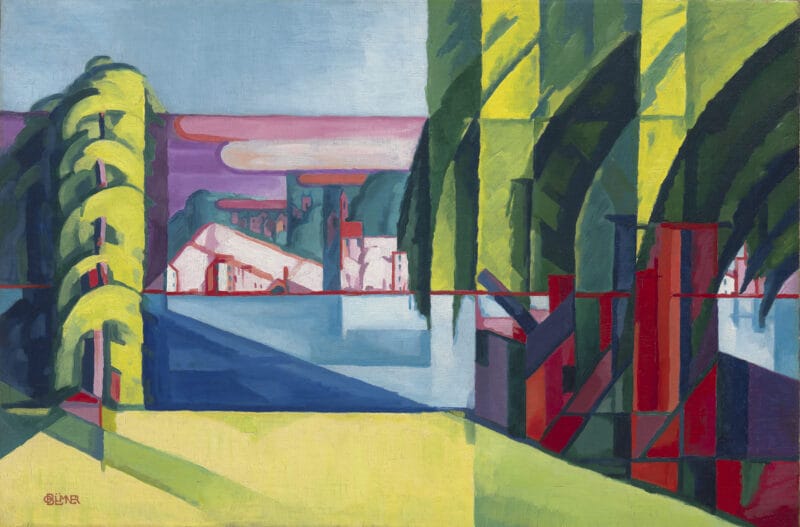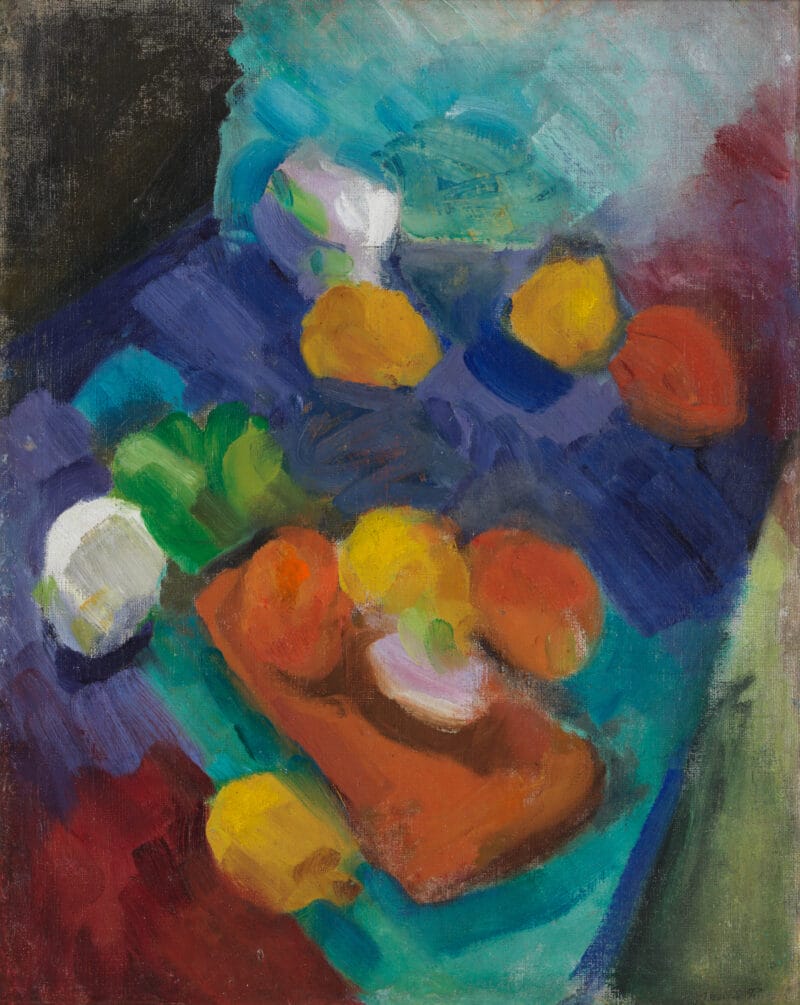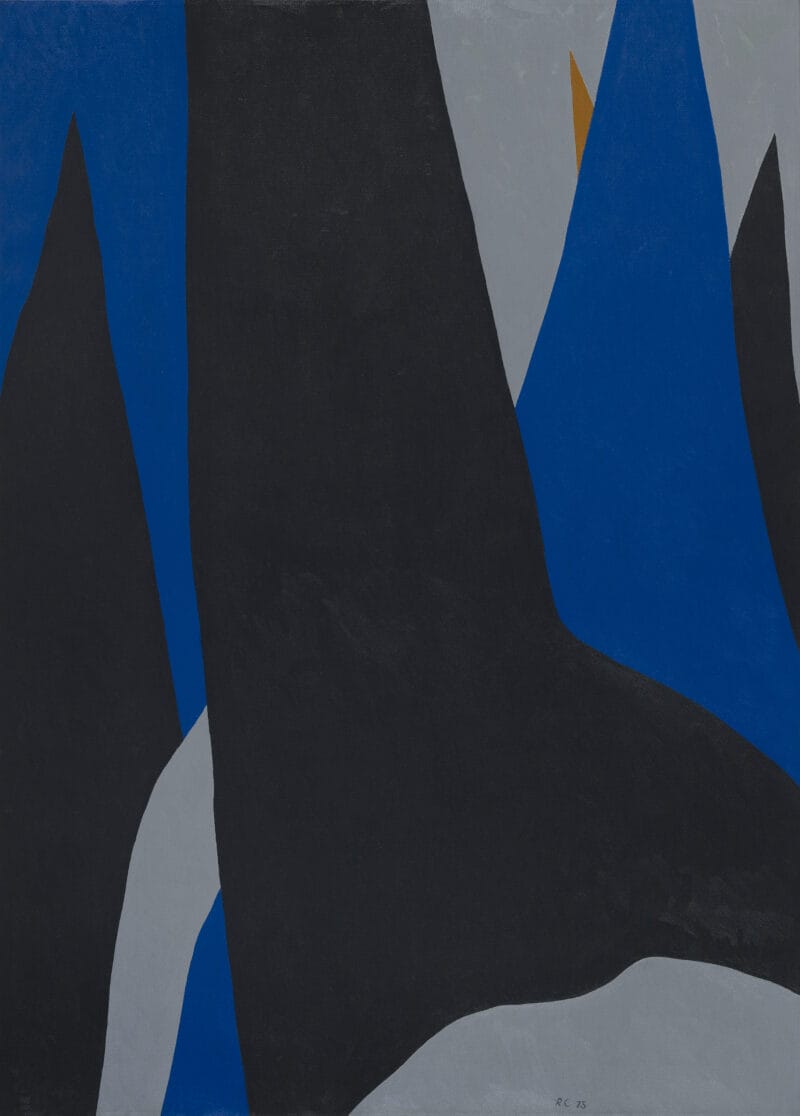
About the Object
By 1921, Dasburg was spending most of his time in Taos. Influenced by the landscape of New Mexico, he moved away from pure abstraction, finding more inspiration and satisfaction in reacting to observations in nature rather than his imagination. He used simplified shapes to represent reality, relying mostly on color to convey an image. This still life serves as a study in shape, color, balance, and rhythm. Dasburg made sure each individual shape that he used contributed to the picture as a whole. Here, we can see the blending of a variety of influences: the art that Dasburg encountered in Europe, particularly Cézanne; the artist’s previous abstract practice; and the rich, earthy color palette of New Mexico.
Additional Information
In 1918, Mabel Dodge Luhan invited Dasburg to Taos, New Mexico, where he quickly became entranced by the landscape, individuals, and artists. By 1922, the year he became a U.S. citizen, Dasburg was spending most of his time in Taos. He established his own style and solidified his place as a principal artist of the Modernists in New Mexico through his use of watercolor, pastel, oil, and prints. Dasburg’s blend of techniques acquired during his extensive travels make him an important touchstone in the Vilcek Foundation Collection.
The Artist;
Gift from the artist to a friend;
Private Collection, Woodstock, NY;
[Fletcher Galleries, Woodstock, NY, 2016];
[Owings Gallery, Santa Fe, NM, and David Cook Galleries, Denver, CO];
Tia Collection, Santa Fe, NM, 2016-2020;
[Owings Gallery, Santa Fe, NM];
Related Objects
You may also be interested in
Dayton Art Institute opens “Ralston Crawford: Air + Space + War”
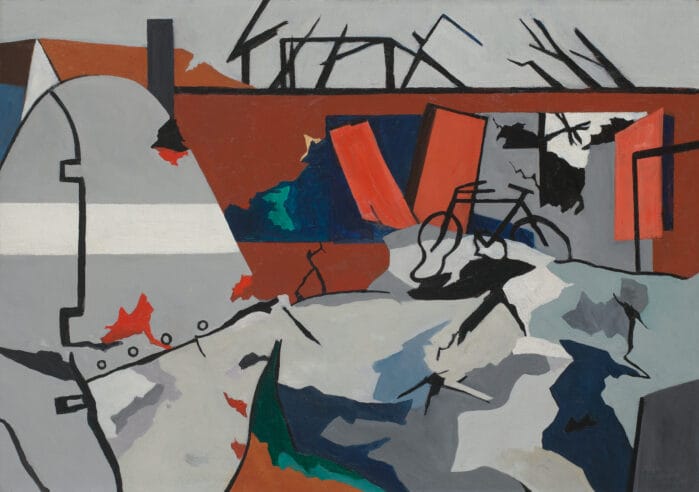
The Coloring Book of American Modernist Artists
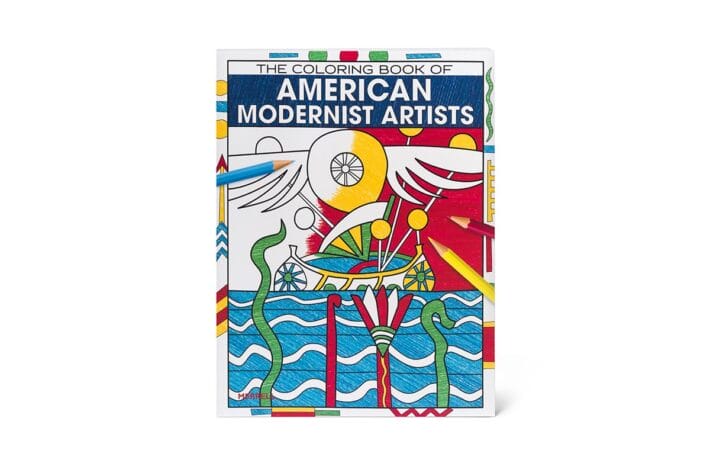
Coloring Book Inspired by Marsden Hartley
